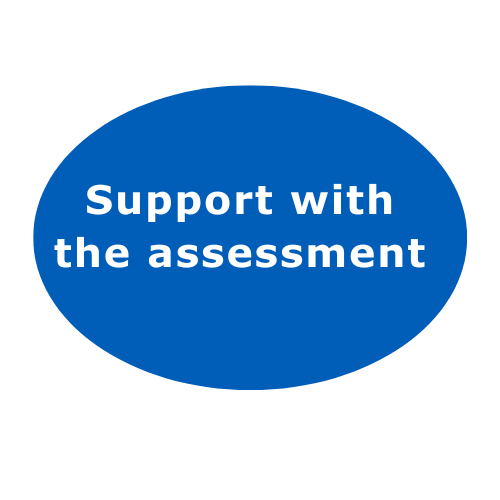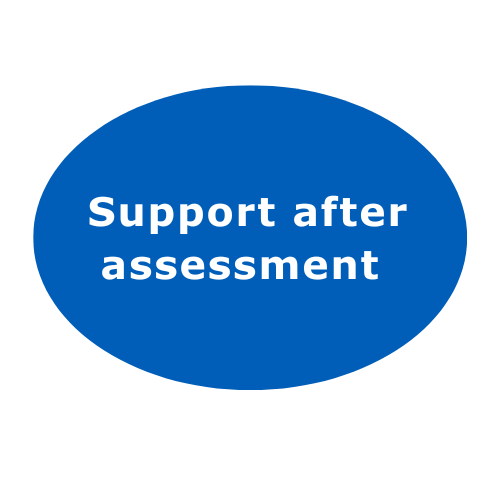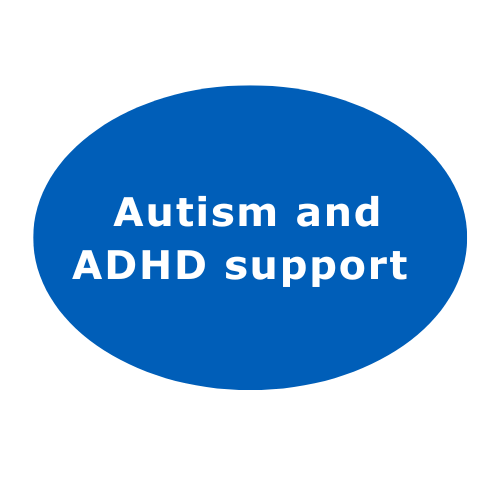ADHD is diagnosed through assessment and review, not through blood tests or scans.
Once a referral has been accepted, an assessment process takes places. There are several stages to the assessment process:
The ADHD team gathers information from parents, carers, schools and any other key professionals using standardised questionnaires. Information in the questionnaires is then assessed and the questionnaires scored to determine if they reach the clinical threshold for ADHD. Parents can also provide any additional useful information such as school reports as supporting evidence.
The questionnaires can help identify specific symptoms of ADHD that may not otherwise emerge and reveal how well a person functions at school, home, or work.
As part of the ADHD assessment process, your child or young person will need a physical examination. We will listen to your child or young person’s heart. We will also measure:
- height
- weight
- pulse
- blood pressure
Your child or young person may need to attend a Qb test. You may receive an appointment to bring your child for a Qb test.
The Qb test is a tool used to help clinicians assess ADHD (attention deficit hyperactivity disorder) in children, young people and adults. The test monitors how much a person moves. It focuses on attention, impulsivity and activity levels. There are no right or wrong answers in this test. It is used to track how your child or young person responds. Clinicians cannot diagnose ADHD only using the Qb test. It’s used alongside other tools like observations or assessments from professionals. You will not be able to get any immediate results as to whether or not your child or young person has ADHD.
What will happen during the appointment?
Our clinician will greet you and bring you and your child or young person into the clinic room. We will check that all your personal details are correct. We will explain the Qb test and the guidelines for the test.
You will be asked to sit outside the clinic room during the test. This is so your child or young person can focus on completing the test with minimal distractions. We will ask you to fill out some questionnaires whilst you are waiting.
Before the test, your child or young person will watch a instruction video on how to complete the test. They will also be given some practice tests to help them feel more comfortable and confident taking the test. Your child or young person will be able to ask as many questions as they need before the test starts.
The clinician will be in the room with your child or young person. If you child or young person has any issues or problems with the test, the clinician can help them.
Taking the Qb Test
Qb Test Instruction video https://youtu.be/KU_Tl0ycoDk
Depending on your child or young person’s age, the Qb Test will last between 15 or 20 minutes. The test will automatically end after the required time of 15 or 20 minutes.
The Qb test uses:
- Soft headband with a reflective ball on
- Responder button
- Laptop
- Infrared tracking camera
Cameras and filming
The test uses an infrared tracking camera. This camera films the movement of the reflective ball attached to the headband. It will only record how much your child or young person moves.
This is why it’s important your child or young person doesn’t wear anything sparkly, shiny or reflective.
For the test itself, your child or young person will be sitting down in front of a laptop screen. They will wear the soft flexible headband with a reflective ball attached to it. This will measure your child or young person’s movement during the test.
They will also be given a responder button to use. They will click the button when they see certain shapes on the screen.
The test will automatically end after 15 or 20 minutes, depending on your child or young person’s age.
There is no wrong way to take this test. Your child or young person cannot fail it. It is not a pass or fail test. The Qb Test is used to gather information about your child or young person.
Following the Qb test screening, an appointment will be made for a consultation with Community Consultant Paediatricians or ADHD Advanced Clinical Practitioner and a Non-Medical Prescriber. The appointment usually lasts about an hour and 15 minutes and collates all of the information gathered through the questionnaires and previous assessments. Time is spent carefully going through the child’s history with them and their parents and/or carers.
Information gathered is assessed and an appropriate management plan is discussed.
If your child is diagnosed with ADHD, treatment options will also be discussed.
At this appointment, parents and/or carers have the chance to ask any questions they might have and you will also be signposted to sources of advice, guidance and support including Parent Information Sessions. Lots of helpful resources are available on this webpage including leaflets about ADHD and behaviour management.
Please note that not all children who are assessed will receive a diagnosis of ADHD. However, a child or young person does not need a medical diagnosis in order to get support in education. Please see the ‘further support’ section for details of local support for children with neurodevelopmental needs.
Treatment interventions
With parental consent (and agreement from the young patient), the service can provide a range of treatment interventions including stimulant and non-stimulant medications. Working with parents and the child’s GP, the medications are regularly monitored and reviewed. While medications are not a cure for ADHD, they have been proven to help people with the condition, improving their ability to concentrate, control their impulses and feel calmer.
Medication isn’t always an option for everyone and, understandably, some people prefer to try other options in the first instance. What would be most suited to the young person’s needs will be discussed with the ADHD Clinical Nurse or Consultant Community Paediatricians, however non-medication interventions can include Cognitive Behavioural Therapy (CBT), psychoeducation, parental training and education programmes and social skills training. You will also find lots of guidance and advice on coping strategies, improving sleep and managing emotions on this web page.
These resources can also support for families while they wait for an appointment.


